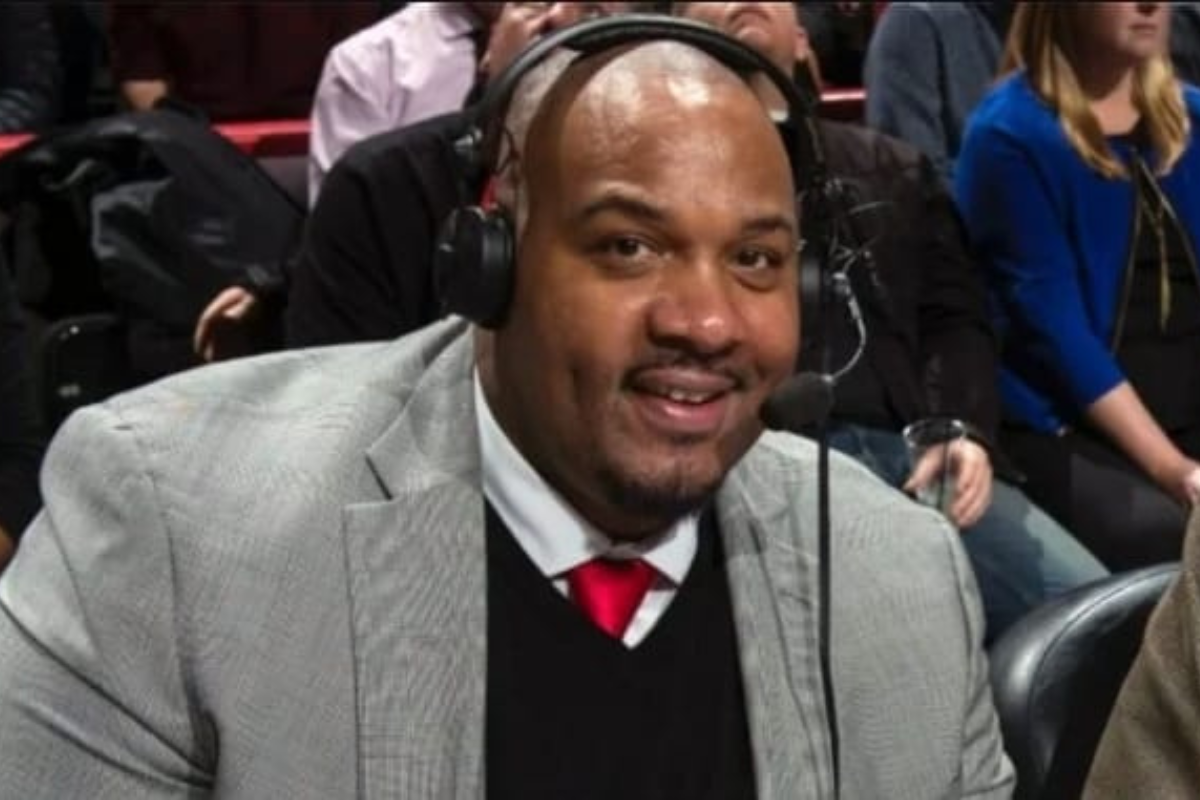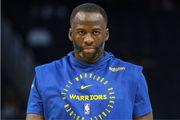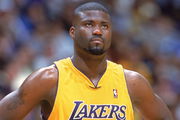
Imago
unlicensed

Imago
unlicensed
“Oh my goodness. I’m coming again, Elizabeth! Oh lawd, it’s the big one, Elizabeth!” Those were the unforgettable words from the famous 1970s American sitcom Sanford and Son. But if you have been following the NBA season closely, you know who borrowed them: Bulls announcer Stacey King. He practically lost it live as Nikola Vučević sank a game-winning corner three with just 3.2 seconds left.
Watch What’s Trending Now!
Josh Giddey added to the magic by becoming the first Bull since Michael Jordan in 1989 to record back-to-back triple-doubles. The nostalgia hit King hard, watching the Bulls’ legacy feel alive once more. And here’s a fun fact that adds even more flavor: Stacey King isn’t just the voice of the Bulls; he’s an NBA champion himself. And what better time than now to know about him more?
ADVERTISEMENT
Who is Stacey King?
Ronald Stacey King, born on January 29, 1967, in Lawton, Oklahoma, is a former NBA center and current sports announcer. Standing 6’11”, he honed his skills at the University of Oklahoma, but it was in the pros where his story really took off.
Drafted into the NBA, King found himself playing alongside the legendary Michael Jordan, and together they carved out history, winning three straight championships with the Chicago Bulls from 1991 to 1993. But King’s tale didn’t end when the final buzzer sounded. He reinvented himself off the court as a sports announcer, bringing games to life with the same intensity he showed as a player.
Top Stories
Did Zion Williamson Slide Into Sydney Sweeney’s DMs? Fact Checking the Viral Screenshot

Cameron Brink Announces Personal Decision Ahead of Unrivaled Debut With Paige Bueckers

What Happened to Luka Doncic? Lakers Star Misses 2nd Half vs Clippers With Bad News

Warriors Fans Erupt After Draymond Green Gets Ejected During Game vs Suns

Shaquille O’Neal’s Lakers Teammate Arrested Again As Arizona Court Issues Verdict On Order Violation

ADVERTISEMENT
Stacey King’s early life and college
Stacey King’s journey to basketball stardom began in Lawton, Oklahoma, where he attended Lawton High School before heading to the University of Oklahoma.
In Oklahoma, King quickly made a name for himself, dominating on the court and earning a slew of accolades. In 1989 alone, he was named to the Consensus All-American First Team, the NABC, AP, and USBWA All-American First Teams, while also taking home the Sporting News Player of the Year honor.
ADVERTISEMENT
Over four seasons at Oklahoma, Stacey King played 114 games, averaging 26.5 minutes per game. He scored a total of 2,008 points, pulling down 825 rebounds and dishing out 228 assists, with shooting splits of 51.6% from the field and 69% from the free-throw line. His senior year (1988-89) was his peak, averaging 26 points, 10.1 rebounds, and 1.9 assists per game, establishing him as one of the most dominant players in Oklahoma history.
Stacy King’s NBA career
After a standout college career at Oklahoma, Stacey King entered the 1989 NBA Draft and was picked sixth overall by the Chicago Bulls. Although many expected him to go first, he joined a legendary team alongside Michael Jordan and Scottie Pippen. King quickly became a reliable presence in the paint, averaging 6.4 points, 3.3 rebounds, and 0.9 assists per game, shooting 47.8% from the field with a career PER of 11.9 (career overall stats). His contributions earned him 10.9 career win shares.
ADVERTISEMENT

ADVERTISEMENT
King spent four and a half seasons with the Bulls before being traded in the 1993-94 season to the Minnesota Timberwolves in exchange for 7’2” center Luc Longley. During his time in Minnesota, King continued to provide size, experience, and defensive presence. He later played short stints with the Miami Heat, Boston Celtics, and Dallas Mavericks before retiring after the 1996-97 season. Across his career, he totaled 2,819 points, 1,460 rebounds, and 387 assists, leaving a mark as a dependable, team-first big man.
Even beyond raw stats, King’s contributions went deeper. He was named to the NBA All-Rookie Second Team in 1989-90, played in over 82 games in his rookie season, and consistently ranked among league leaders in offensive rebounds and free throw attempts per 100 possessions. While he wasn’t always the spotlight grabber, King’s basketball IQ, timing, and championship experience made him an integral part of one of the greatest dynasties in NBA history.
ADVERTISEMENT
Stacey King’s transformation from player to broadcaster
After retiring from the NBA, Stacey King didn’t stray far from the hardwood. He dipped his toes into coaching first, taking the reins of the Rockford Lightning in the CBA from 2001 to 2003. Under his guidance, the team made a thrilling run to the CBA championship game in 2002, showing that King’s leadership skills weren’t limited to just scoring points on the court. It was a glimpse of the passion and energy he would later bring to a wider audience.
View this post on Instagram
King eventually found his true calling behind the microphone. Starting in 2006 as a studio analyst for the Chicago Bulls, he quickly moved up to the broadcast team, eventually becoming the lead color commentator alongside Neil Funk, and later Adam Amin.
ADVERTISEMENT
Fans instantly fell in love with his quirky, high-energy style and his signature catchphrases, including his famous “Oh my goodness. I’m coming again, Elizabeth!” borrowed from Sanford and Son, made each broadcast feel like a live celebration. King’s voice has become synonymous with excitement, humor, and pure basketball joy.
ADVERTISEMENT
ADVERTISEMENT
ADVERTISEMENT

